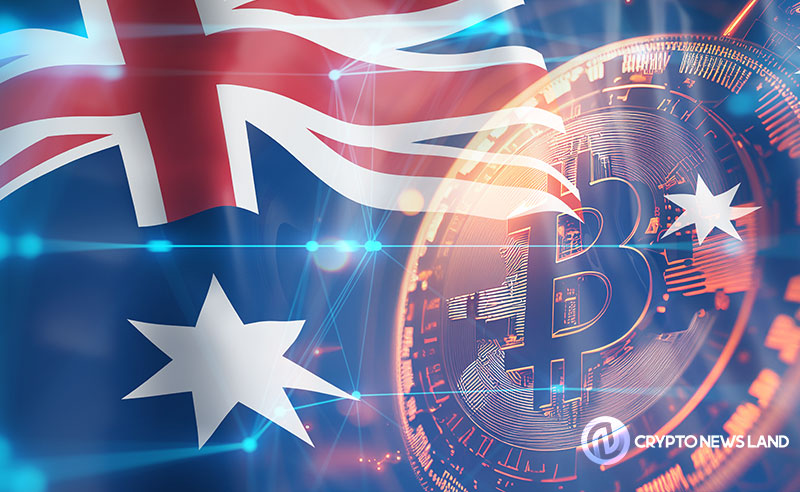He asks each employee to generate $100 million in profit: Tether CEO discusses the ultimate meaning of "stability"
Original Title: USDT Founder: Bitcoin, Gold, Stablecoin, & Tether, the Most Profitable Company in the World | EP 143
Original Source: When Shift Happens
Original Translation: TechFlow
Guest: Paolo Ardoino, Tether CEO & Bitfinex CTO
Host: Kevin Follonier
Broadcast Date: October 16, 2025
Key Takeaways
Paolo Ardoino, CEO of Tether and CTO of Bitfinex, shared how he built one of the most profitable companies in the world—where each employee generates about 100 million USD in profit on average.
Tether launched USDT, the most widely used stablecoin globally, providing financial support to around 3 billion unbanked people worldwide, especially in countries facing extreme inflation and financial crises.
Against the backdrop of increasing global economic instability, Paolo founded a company dedicated to bringing stability through "democratizing finance" and achieved extraordinary success. Last year, Tether's revenue reached 13.7 billion USD.
Highlights
· I usually sleep at least 5 hours every night. But the problem is my sleep is fragmented because I always keep notifications on, waking up every hour to check them, then going back to sleep.
· My hometown is a small village with only 600 people, so entertainment was limited. I started learning programming at the age of 8, and this passion continued through my university years and up to now.
· I personally have almost no hobbies. In fact, my only hobby is thinking every day about how to fulfill my mission and bring stability to the world.
· The existence of USDT is precisely to provide financial stability to people in emerging markets facing extreme economic instability.
· Tether is not just a stablecoin company, but a stability company. This is the mission of Tether and the true meaning of a "stability company"—a company with social stability as its ultimate goal.
· What we need to do is make access to finance and technology more democratic, allowing more people to participate directly through peer-to-peer technology and decentralized finance.
· Tether is a once-in-a-century company. Unlike other companies trying to build closed ecosystems, Tether's platform is open to the entire world. This is a completely different business model and the key to our success.
· Everyone should have their own mission, no matter how big or small, as long as it makes you happy.
· People usually use art to express emotions and thoughts, but I realized my way of expression is through programming. I can create my own world and invite people into it through code.
· Stablecoins are actually the ultimate social network.
· We hope that through this round of fundraising (20 billion), we can show the world that Tether's mission goes far beyond this. Our goal is to achieve 100x growth. Tether has the capital, philosophy, and technological innovation to do anything we want.
· If you create a product that solves real-world problems, it can truly change the world.
· Football is a global sport that reaches people of all classes, rich or poor. Therefore, investing in a football club is a simple way to reach global users. We hold a 10% stake in Serie A's Juventus club.
The Drive for Continuous Effort
Kevin Follonier: Many of my guests have something in common—they've experienced things in life that created a sense of imbalance in their hearts. So, is Tether's mission today related to something you lacked when you were young?
Paolo Ardoino: I think I'm very lucky. Although my family wasn't wealthy, I learned the most important lesson from them—hard work. I remember my grandparents, who have passed away, ran a small farm in Italy. They focused on producing high-quality olive oil and tomatoes, paying great attention to detail. Whether it was tomatoes, sage, rosemary, or asparagus, they always strived to do their best, and this passion ran through their entire lives.
My grandfather got up at five every morning, took a nap at one in the afternoon, and continued working in the evening. This simple and fulfilling life kept him happy. Although he only had a primary school education, he was very good at math. My parents were also diligent role models. My mother was a kindergarten teacher, and my father was an ordinary employee who worked at Italy's national energy company and later retired in Israel. They are still alive, and I feel very fortunate. After work, they would take us to exercise and then return to the farm to help out. You could say that from morning to night, our lives were about getting up, working hard, and getting things done. But all of it was filled with passion. I never heard them complain, because for them, this was their mission.
Everyone should have their own mission, no matter how big or small, as long as it makes you happy. So, when someone says to me, "Oh, you work so hard," I say, no, the meaning I see in hard work goes far beyond that. I'm definitely not just working hard.
My schedule is also very special. I usually sleep at least 5 hours every night. But the problem is my sleep is fragmented because I always keep notifications on, waking up every hour to check them, then going back to sleep.
Kevin Follonier: You've been doing this for 11 years, sleeping 5 hours a night and waking up every hour? Do you nap during the day?
Paolo Ardoino: No. If I nap during the day, I feel groggy. So I never nap.
Started Programming at Age 8
Kevin Follonier: You started programming at 8? How did that happen?
Paolo Ardoino: My father worked at Italy's national energy company. In the early 1990s, public enterprises in Italy began introducing computers to improve efficiency and modernize. As is well known, Italy's bureaucracy is very complex, and many tasks were time-consuming, so the introduction of computers was significant for improving efficiency. My father was passionate about these new technologies. I remember when I was 7, he brought home a computer and told me it was very expensive, costing about two months of his salary. Although I didn't understand what two months' salary meant at the time, he told me it was very expensive and to be careful not to break it.
As the only child in the family, I was naturally curious about the computer. We had floppy disks for games, but due to financial reasons, we couldn't afford many games. Also, in Italy in 1991, game resources were hard to find. My hometown was a small village with only 600 people, so entertainment was limited. Over time, I got bored with the existing games and wanted to make my own. I asked my father to buy me a book on how to program games. He said, "Okay, Paolo, I can buy it, but the book costs 60,000 lira."
At that time, Italy still used lira as its currency. He asked me, "Are you sure you want this book? Because it's expensive." I said, "I want to learn." Then he brought the book home, and I started learning programming. This passion continued through my university years and up to now.
The Infinite Possibilities of Programming
Kevin Follonier: You mentioned that programming is a unique form of expression, different from other art forms, that can unleash human imagination and allow us to create entirely new worlds full of infinite possibilities. Can you elaborate?
Paolo Ardoino: Of course. Honestly, I wasn't good at traditional art forms. Although I used to be a decent guitar player, I haven't played in years. In other art fields, I can say I have no talent at all. For example, in school art classes, whether it was technical design or other hands-on projects, my work always looked messy. I remember when I drew, my arm would swing too much, the pencil would move randomly on the canvas, and the final result was always unsatisfactory. I couldn't color, and I couldn't sing—I couldn't even do the most basic artistic expressions.
But people usually use art to express emotions and thoughts, and I realized my way of expression is through programming. I can create my own world and invite people into it through code.
What Is a Stablecoin & Why Are Stablecoins So Important?
Kevin Follonier: You use programming to create stablecoins. What is a stablecoin? If you had to explain it to a mother, how would you do it?
Paolo Ardoino: Simply put, a stablecoin is a digital currency, just like the digital balance you see in your bank account. But the difference is, stablecoins use blockchain technology for transfers instead of relying on the banking system. You can think of it as a "digital dollar" that can circulate freely around the world like cash.
Blockchain is a decentralized technology, similar to a large borderless database, with servers distributed around the world instead of being concentrated in a single bank or institution. We use the best form of database—a decentralized database—to move dollars.
Kevin Follonier: Why are stablecoins so important in our world?
Paolo Ardoino: The significance of stablecoins is that they provide solutions for billions of people worldwide who lack access to financial services. These people often live in countries with high inflation. For example, inflation in Europe is between 30% and 34%, Turkey is at 50%, Nigeria is even higher, and Argentina has sometimes exceeded 200%. In these countries, high inflation causes local currencies to depreciate rapidly, severely affecting people's purchasing power. Now in 2025, everyone is interested in stablecoins.
In developed countries like the US and Europe, the financial system is already very efficient. You may have a bank account, credit card, and payment tools like Cash App or PayPal, with almost no barriers to daily transfers. But in some developing countries, financial system efficiency may be only 5%, and many people can't even open a bank account. Stablecoins, through blockchain technology, can raise financial efficiency in these regions to 60% or 70%. For people living in remote African villages, this change is huge—it not only allows them to participate in the global economy but also brings them more opportunities.
The internet started to enable this connection. In fact, the internet is a way to invite people into the global context, but without financial services, the internet is meaningless. I think stablecoins are, in this sense, actually the ultimate social network, because the currency of social networks, in my view, is the ultimate social network, as it involves interpersonal interaction, peer-to-peer interaction, and it inherently contains value and the information you want to transfer.
Tether's Mission & Becoming a Stability Company
Kevin Follonier: So what is your mission?
Paolo Ardoino: My mission is to bring stability to the world. In a world that is gradually becoming more restless and chaotic, I think stability is especially important. This may sound strange, but Tether's success is actually closely related to the worsening of many global problems. If the financial system were fair, resources accessible, and everything worked properly, there would be no need for USDT. The existence of USDT is precisely to provide financial stability to people in emerging markets facing extreme economic instability.
As a developer, I believe we are building Tether into a leader in technology, not just in finance but also in telecommunications, social media, and energy. Our goal is to use decentralized technology to make these industries more open and accessible, just as we did with the dollar and finance, and this is Tether's core mission. It's worth mentioning that most of the profits we earn are not distributed to shareholders—about 95% of profits stay within the company, invested in new things and new ideas to support our mission.
I personally have almost no hobbies. In fact, my only hobby is thinking every day about how to achieve this mission. I'm obsessed with this issue—I'm the kind of person who gets deeply involved in a field, and it basically takes over my whole life.
Kevin Follonier: You mentioned in Docker Times that as the global situation becomes increasingly unstable, Tether will continue to invest part of its profits in safe assets like bitcoin, gold, and land. So, what is a stability company?
Paolo Ardoino: I often think about what a "stability company" really is. Once, a reporter asked me to define Tether in a few words. He tried to say Tether is a stablecoin company. My answer was, Tether is not just a stablecoin company, but a stability company.
In my view, access to technology and finance is key to social stability. If people can easily access technology and financial services, they have less motivation to create chaos and instability. Often, the root of social unrest is people's dissatisfaction, which usually stems from extremely difficult living conditions.
Of course, there are other reasons for social instability, but overall, I think global stability is closely related to the huge gaps between countries and regions. Over the past 20 to 30 years, although technology has tried to narrow these gaps, it has actually further exacerbated inequality. The same thing has happened in finance—about half the world's population cannot reliably access financial services, or even open a bank account. This is not because they are untrustworthy, but because their poverty makes banks uninterested. This phenomenon is especially evident in some African or Central American countries, leading to serious instability in these regions because the distribution of technology and financial resources is completely tilted toward a small wealthy group.
What we need to do is make access to finance and technology more democratic, allowing more people to participate directly through peer-to-peer technology and decentralized finance. I believe that when people's lives, families, communities, and countries become more stable, they will have less motivation to create chaos. This is the mission of Tether and the true meaning of a "stability company"—a company with social stability as its ultimate goal. We have already proven that such a company can be built. And, gratifyingly, the more we move in this direction, the more profitable the company becomes.
This is also why I define Tether as a "once-in-a-century company." This is not bragging, but because Tether's uniqueness lies in the fact that the more it promotes open source, openness, and decentralization, the more it attracts a broader user base. These users use the tools provided by Tether to achieve financial and speech freedom, and the more widespread this process is, the more valuable the company's data becomes. Unlike other companies trying to build closed ecosystems, Tether's platform is open to the entire world. This is a completely different business model and the key to our success.
Tether: The Company with the Highest Profit Per Employee Globally
Kevin Follonier: You mentioned that Tether is one of the best companies in the world, with a profit margin as high as 99%. How did you build a company where each employee generates about 100 million USD in profit per year? Have you thought deeply about this?
Paolo Ardoino: Frankly, I haven't thought much about such data. We have always focused on optimizing efficiency. Whenever we do something, I ask myself: Why do it this way? Is there a better way? How can we further improve efficiency? Two years ago, Tether's team was only 40 people, but as the business expanded, we now have 250 to 300 employees, including many developers, as we are expanding into new areas like AI. However, the core stablecoin management team still remains around 100 people.
Of course, the current high interest rate environment greatly helps our profitability. Before 2022, global interest rates were low, and this change was hard to predict. In addition, the impact of the pandemic was also unexpected, and these factors together drove our profit growth. However, we believe that by continuously expanding into new business areas, we can maintain high profitability in the long term. Optimizing efficiency and seizing opportunities are key to our success.
Why Raise 20 Billion USD?
Kevin Follonier: You recently announced that you are considering raising 20 billion USD and valuing the company at 500 billion USD. If these funds were available tomorrow, how would you use them?
Paolo Ardoino: Last year we achieved 13.7 billion USD in profit, and this year's performance is expected to be similar. But I want to emphasize that our purpose in raising funds is not just to make money, but to send an important message. Just like the Joker said in Batman: "It's not about money, it's about sending a message." We hope that through this fundraising, we can show the world that Tether's mission goes far beyond this. Our goal is to achieve 100x growth.
Once in public, I mentioned that I am a big fan of Peter Thiel and am reading his book "Zero to One." However, it's no longer the era when startups can make huge profits just by simple data growth. I prefer to say that our goal is to go from our current foundation to the "zero to one hundred" stage. I once called it "0.25" because we're just getting started.
I say this because it's not about how much money we've made, but about the potential we believe we need to seize, to express how we feel about this opportunity.
I define Tether as a once-in-a-century opportunity, because I believe every company needs three things: philosophy, direction, and capital. First, you need a philosophy or belief, to clarify what kind of company you want to be; second, you need the ability to innovate, whether in technology or other fields; third, you need capital. Most companies only have one or two of these. You can be a large-scale innovator with the right philosophy, but if you don't have funding, you need to raise money and go to venture capital firms. However, the incentive of venture capital is to make more money than they invest in you, which may deviate from your original project, philosophy, and ideas.
I think in this case, Tether has capital, philosophy, and technological innovation, and can do anything we want. Therefore, the message we want to convey is that we have a lot more to show, we want to grow significantly, and our vision is amazing. We hope to have partners join our company to help us realize this unique and powerful vision—we don't want to mess it up.
Why Did Tether Invest in @Plasma?
Kevin Follonier: Tether recently invested in a company called Plasma. Its founder Paul previously participated in our podcast and helped us build this platform. So, why is Plasma so important that Tether decided to invest in them?
Paolo Ardoino: I think Tether's USDT is not just a digital currency, but also an important part of blockchain technology. Stablecoins are essentially digital dollars based on blockchain technology. However, over the past few years, the development direction of blockchain technology has deviated somewhat. Many developers focus more on how to quickly launch hype-driven blockchain projects, such as meme coins like Dogecoin. While this approach may work in the short term, it doesn't really drive the industry's long-term development. Nevertheless, such projects have indeed made some teams money.
The success of USDT proves one thing: If you create a product that solves real-world problems, it can truly change the world.
Therefore, I think blockchains based on stablecoins or focused on a specific use case can make stablecoin transfers very cheap and very easy to use. For example, if you have stablecoins on Ethereum now, you still need to buy ETH as gas to transfer USDT, and this user experience needs improvement. I think, although the blockchain industry has developed for many years, the quality of user experience is still low because we've focused on the wrong things, only on our own "ecosystem," whose members are basically geeks and those with time to learn new things. However, for most ordinary people, this approach doesn't work. That's why USDT is so popular globally, because USDT isn't catering to speculators.
An interesting statistic shows that 67% of USDT transactions are simply for transferring funds, while for other stablecoins, only 10% to 20% of transactions involve transferring other assets. This shows that most USDT users just want to get the stable value of 1 USD. In contrast, 80% of other stablecoin users are also transferring other assets, meaning they are more inclined to trade assets in DeFi. Therefore, I prefer USDT to serve tens of millions of ordinary users living in Africa, rather than just meeting the needs of 10,000 New York bankers.
Why Does Tether Own 10% of Juventus Football Club?
Kevin Follonier: Tether recently invested in Juventus Football Club and holds about 10% of the shares. This makes people wonder, why would a company focused on stablecoins choose to invest in a football club?
Paolo Ardoino: First of all, both Giancarlo and I are loyal Juventus fans. Giancarlo is from the Piedmont region of Italy, and Juventus is the representative team of that land. I myself grew up near Genoa, about 80 to 100 kilometers from Turin. Many people from our hometown vacation in Piedmont, so Juventus has a huge influence. My father is a Juventus fan, and I inherited his preference, as did Giancarlo.
Another reason is that we believe Italy's football industry needs modernization. In Italy, football clubs are often used by entrepreneurs as tools of power. They usually own both media and clubs and use these resources for political activities. In contrast, we see countries like Saudi Arabia investing in football, as well as clubs like Chelsea, Manchester United, and Paris Saint-Germain, which already have hundreds of millions of fans worldwide. Football is a global sport that reaches people of all classes, rich or poor. Therefore, investing in a football club is a simple way to reach global users.
We hope that Italian football clubs can build closer relationships with fans, spread positive values, and achieve profitability through modern management models. The success of a club should be based on team strength, match results, and interaction with fans. However, in many Italian clubs, this model hasn't really been realized. Through our investment in Juventus, we hope to promote change in Italy's football industry and make Juventus more international and forward-looking.
Original Link
Disclaimer: The content of this article solely reflects the author's opinion and does not represent the platform in any capacity. This article is not intended to serve as a reference for making investment decisions.
You may also like
Hyperliquid Strategies Files $1 Billion Equity Offering to Expand HYPE Token Holdings and Strengthen Balance Sheet

Crypto Adoption in Australia Slows as Public Waits for Regulatory Clarity

$120M in Bitcoin and Ethereum ETF Outflows
Bitcoin and Ethereum ETFs saw $120M in outflows on Oct. 22, signaling cautious investor sentiment.Bitcoin ETF Outflows Take the LeadEthereum Also Faces Pressure

Bitcoin Reclaims $109K, Signaling Strong Bull Momentum
Bitcoin breaks past $109,000, reinforcing bullish market momentum and renewed institutional confidence.Bitcoin Surges Past $109K in Historic MoveWhat’s Driving the Bitcoin Rally?What Comes Next? Eyes on $120K

